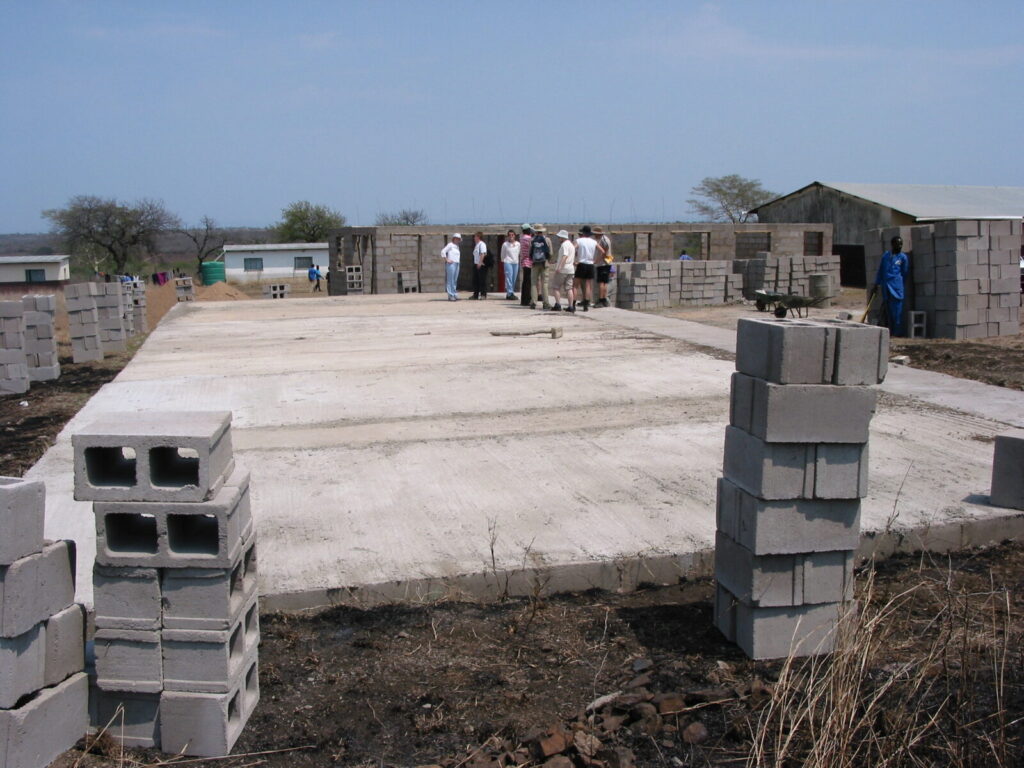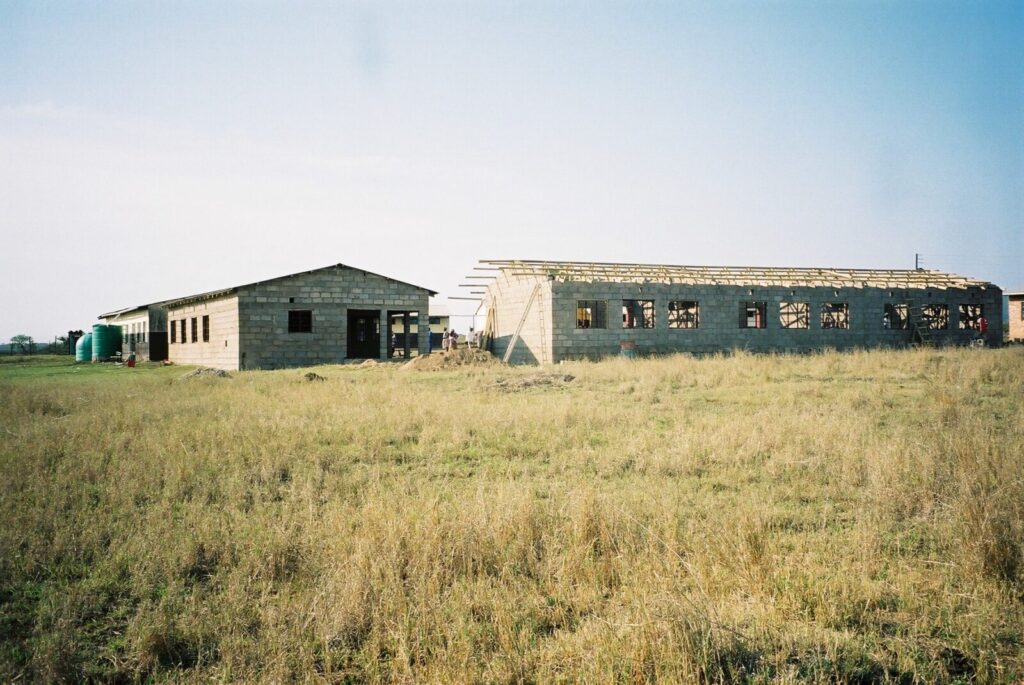In 2003, Phil travelled to Eswatini (formerly known as Swaziland) with a team of people mainly from (and sponsored by) the finance and legal firm Mourant that Phil worked for. This would be the first of three times employees from Mourant took part in ‘The Swaziland Challenge’ in partnership with Hands Around the World and the wonderfully inspirational Father Maurice O’Gorman. The aim was to aid the completion of a school room at St Amideus School in Siteki.
Phil’s story
The Swaziland project was the most thought-provoking, hard-working, fun, educational, up-lifting and emotional experience of my life. I have a head full of fantastic memories, but there is one particularly poignant memory from our first day at St Augustine’s that affected me deeply and continues to do so, which I’d like to share.
It was a scorching hot day and before we arrived at the school I was seriously questioning the sanity of the project. During the drive to the school, Father Maurice had shown us the dry river bed caused by two years of ravaging drought. He’d also pointed out the pool to which people walk from miles around to fetch water. Around the pool were a number of ladies doing the washing and the nearby bushes were strewn with a pitiful collection of freshly scrubbed clothes. Dotted across the landscape was a hotchpotch of buildings ranging from traditional round huts made from tree branches and mud, to meagre block constructions, many abandoned half-finished due to lack of funds. As we drove I was struck by the number of young children we saw wandering aimlessly along the sides of the road.
My concerns were put aside once we arrived at the school gates and were escorted in by a team of majorettes in full uniform. The whole school was assembled outside and as we took our places on the veranda outside one of the classrooms we were treated to a wonderful display by the majorettes followed by traditional dancing from the boys. Father Maurice made a short speech to introduce us and we then went into the crowds to meet the children and teachers. Next we were shown the building site and then Father Maurice beckoned me into one of the classrooms where they were storing some of the building materials.


By now it was lunchtime. Lunch is served in a thin plastic bowl and eaten with the hands. The children don’t assemble for lunch, they queue up for their bowlful and then eat it wherever they see fit. Some eat inside, some eat outside. Some sit on chairs, some stand around. Others run about stuffing handfuls whenever the game they are playing permits.
Father Maurice turned to the boy nearest us. He was barefoot and dressed in grey school shorts and a blue school jumper with a hole in the right shoulder bigger than my hand. Father Maurice spoke to him in Siswati and the boy dutifully handed over his bowl. “Look at what they have to eat” he said with a look of sorrow and disdain. The bowl contained neither meat nor vegetables, just a white substance like mashed rice. I made a disapproving look and shook my head in sympathy. “It costs pennies” he added, before returning the bowl to its owner. Father Maurice then cast his arm across the room and said “Do you see the children without bowls?” As I scanned the room I saw that around one third of the occupants were indeed without bowls, “They don’t get any food” he said. “Their parents can’t afford it”.
My stomach lurched violently and I felt a huge pressure well up behind my eyes. Unable to speak, I nodded silently.
